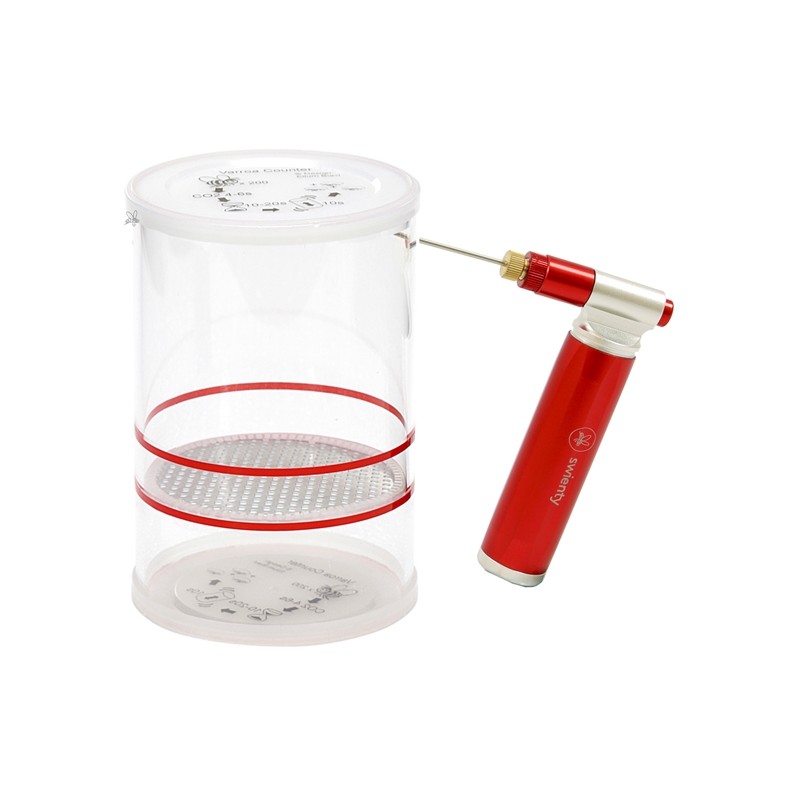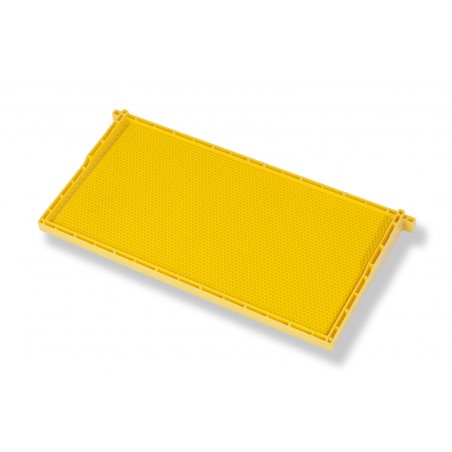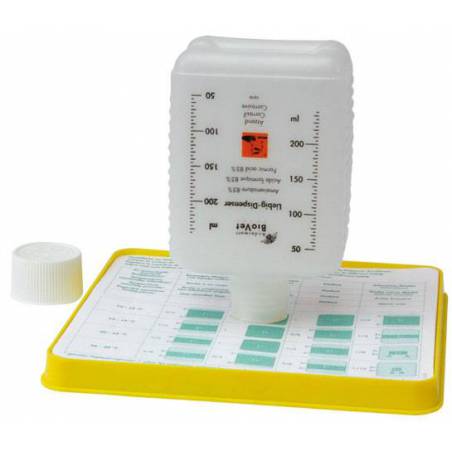








Useful for varroa test and to know the level of infestation of the hive. It is essential to know the health condition of a beehive and also to make the decision of when to do a new varroa treatment. It is easy and simple and gentle on the bees.
Swienty's varroa tester provides an indication of mite infestation before and after treatment. The bees are anesthetized with CO2 for a short while so that the mites can be shaken off before the bees are put back in the hive. Super easy to use, a check takes approx. 1 minute. Developed in collaboration with Ellum beekeeping, Denmark.
HOW TO USE VARROA TESTER
You catch 200 bees from the broodframe (avoid catching the queen). Then anesthetize them with CO2 gas for 10-20 seconds. We wait about 20 seconds after application and immediately shake the Varroa Tester container for 10 seconds. The varroa mites, also affected by anesthesia, will be stripped of the bees and fall to the bottom of the container. In this way, we will make a count of the varroa mites that have fallen to the bottom of the container.
The anaesthetised bees will regain vitality in a short time, i.e. it is totally harmless to the bees, unlike other methods (those used with alcohol or others) which are aggressive and kill bees in each sample. Includes container and CO2 dispenser with 2 bottles of 16 grams of CO2 (dose for more than 12 tests). C02 bottles are replaceable.
ABOUT THE METHOD
The principles of CO2 application are similar to both the alcohol wash and powdered sugar roll methods. In the CO2 method, however, both bees and mites are rendered unconscious by exposure to carbon dioxide gas. The sample of anesthetized bees is then gently shaken in the sample container, causing mites to fall from the bees and through holes in the bottom of the container. Like the powdered sugar method, this process generally does not kill the bees, though a small loss is possible. As always, first locate and isolate the queen when gathering a sample to avoid harming her. Research conducted in Europe indicates results that are similar in accuracy to those obtained by an alcohol wash.
HOW TO CALCULATE YOUR VARROA MITE INFESTATION
Note: This method can be applied for alcohol wash, powdered sugar roll and CO2. Divide the number of mites counted by the size of the sample (300 bees), then multiply by 100. The result will indicate mite infestation as a percentage. For example, if your sample contained 300 bees (1/2 cup), and you counted 12 mites, dividing 12 by 300 gives you .04. Multiply .04 by 100, to obtain your infestation percentage, which, in this case, is four percent.
BENEFITS OF CO2 METHOD
• Keeps sampled bees alive (small number may be killed).
• The least stressful method for the bees.
• Moderately fast.
• Can be performed at the apiary when you visit it for any reason.
• As effective as alcohol per a study conducted in Europe by Jiri Danhilik.


Receive it between 2 Jan and 6 Jan

Useful for varroa test and to know the level of infestation of the hive. It is essential to know the health condition of a beehive and also to make the decision of when to do a new varroa treatment. It is easy and simple and gentle on the bees.
check_circle
check_circle





